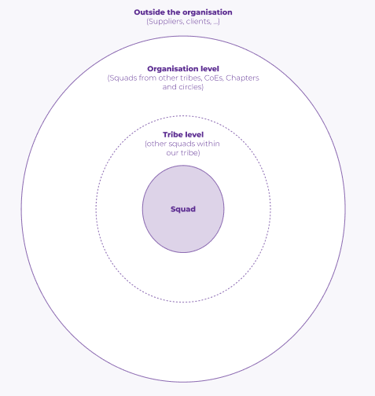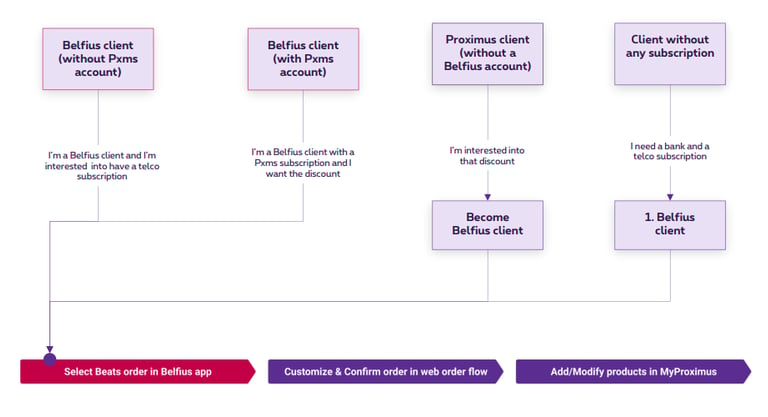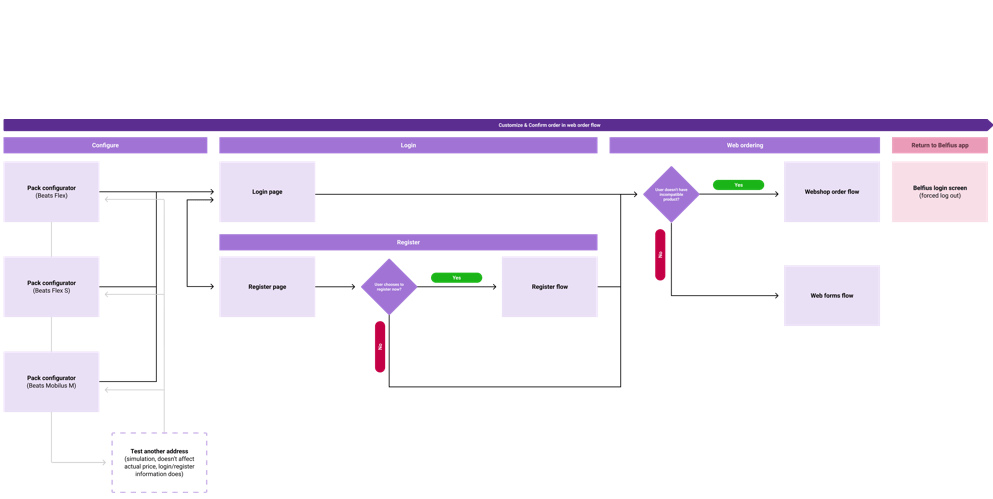Solving the Drop-Off Problem in the Belfius-Proximus Funnel
Marwan Louhichi
The journey map that changed the conversation
My next step was to build a complete customer journey map, showing the paths of users depending on their existing subscriptions (Belfius, Proximus, both or neither). This helped clarify friction points and gave us a shared view of reality — a crucial alignment step in such a distributed collaboration.
Once the map was in place, I worked with data analysts to investigate key funnel questions:
Where exactly were users dropping off?
Was the issue UX, tech, or business logic?
How did performance compare with Proximus' native webshop?
One step stood out: login. Users were required to log in to Proximus systems during the Belfius flow, and data showed a ~50% drop-off at that moment, with a success rate of just 56%. Further investigation revealed not only a usability issue, but also technical instability — login attempts were simply failing too often.


Stakeholders and unknowns
The first challenge? The number of parties involved. From Proximus squads to Belfius tech teams, content owners, legal advisors and analytics leads — some were visible, others hidden behind indirect processes. I started with a full stakeholder mapping exercise to understand roles, align goals and surface all the moving parts.
From Audit to Action
I followed up with a full UX audit of the order flow, zooming in on the login handover and the logic of the webview transition between Belfius and Proximus. The process involved usability heuristics, flow simplification, and exploration of alternatives (like client recognition logic or better login sequencing).
These findings were compiled into a set of UX recommendations and flow prototypes, which we presented in a dedicated co-creation workshop with Belfius stakeholders. The outcome? Full alignment and green light to develop the improved flow.
What Changed
After deployment of the new experience:
Sales funnel drop-offs at the login stage decreased.
The number of successful orders improved.
Internal visibility of the issue increased — enabling better monitoring and long-term governance.
Why It Mattered
This project proved that UX is not just about screens — it's about systems and alignment. By combining stakeholder mapping, funnel analytics and design strategy, we were able to turn a confusing cross-organisational experience into a smoother, measurable conversion path.
It’s a reminder that even side quests, with the right lens, can lead to real business impact.




At Proximus, not every project starts with a clear brief — some come as side quests that reveal bigger systemic issues. That was exactly the case with our Belfius “Beats” collaboration, where Proximus telco products are sold through Belfius’ banking platform. I was asked to review and improve the end-to-end sales experience

